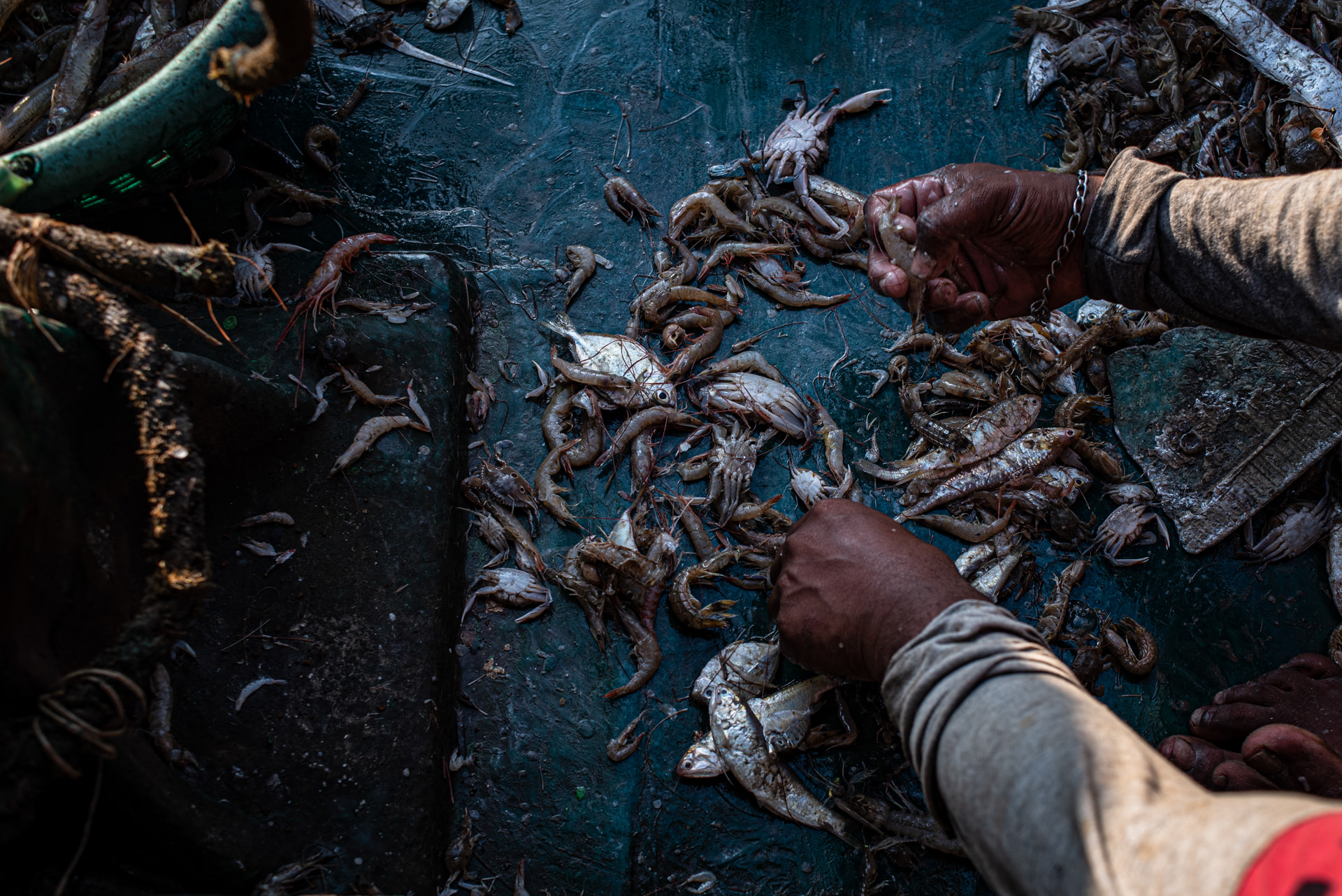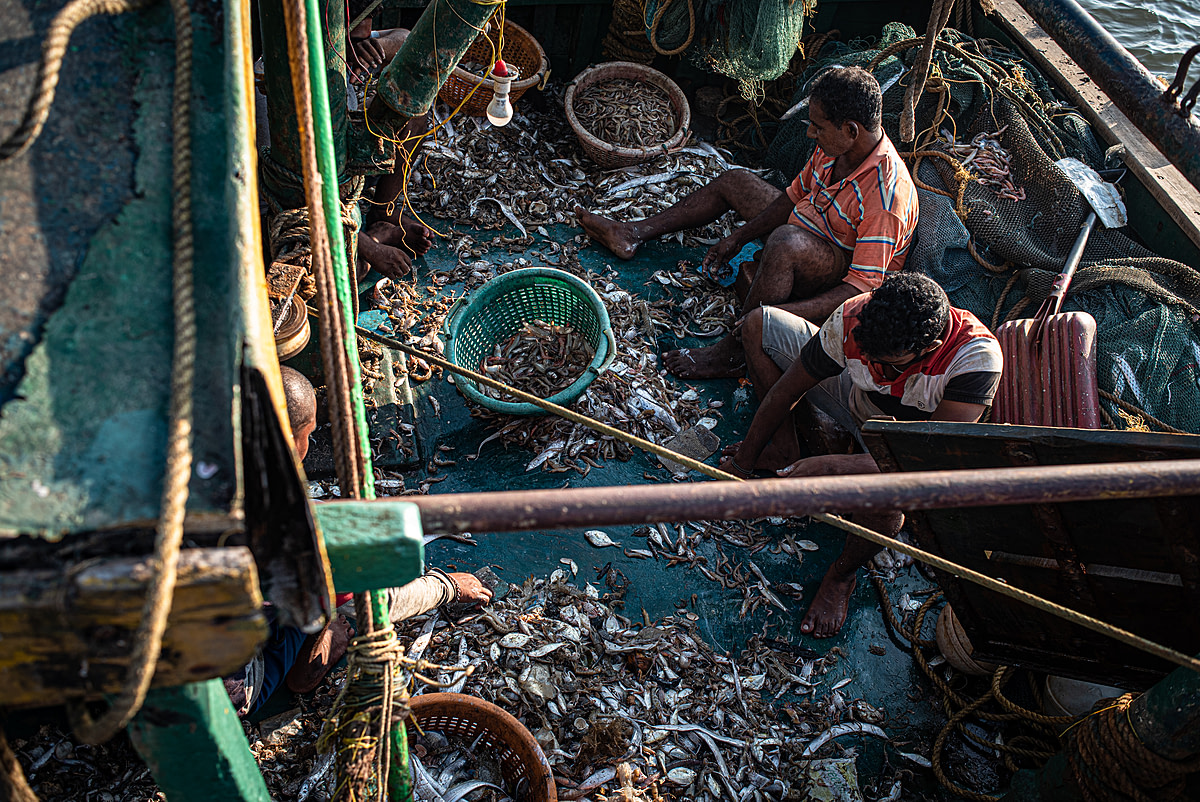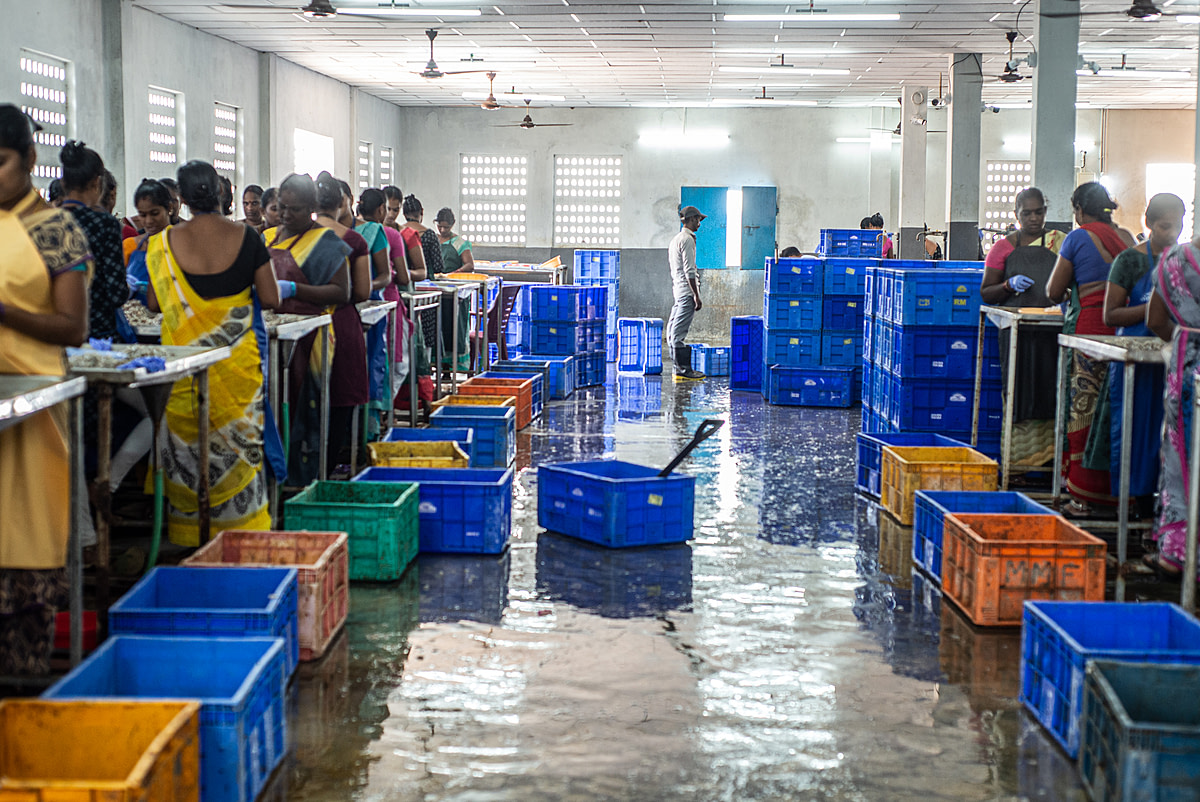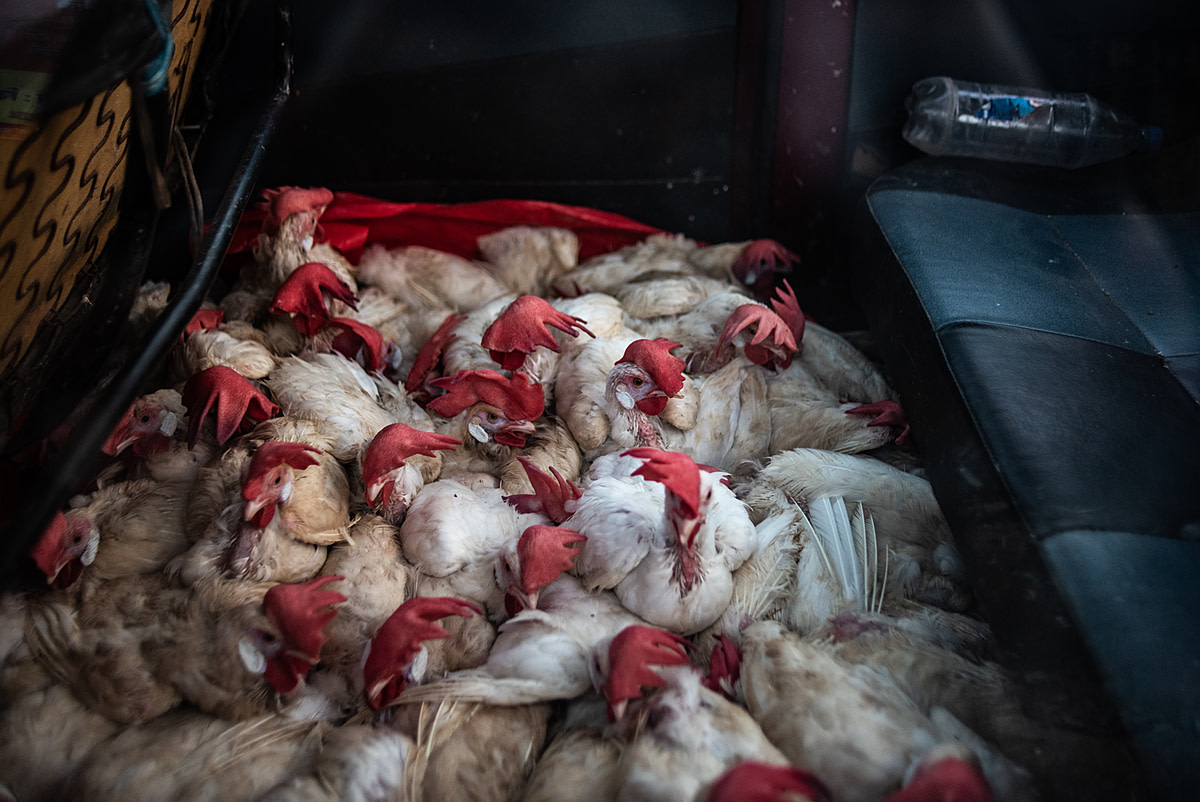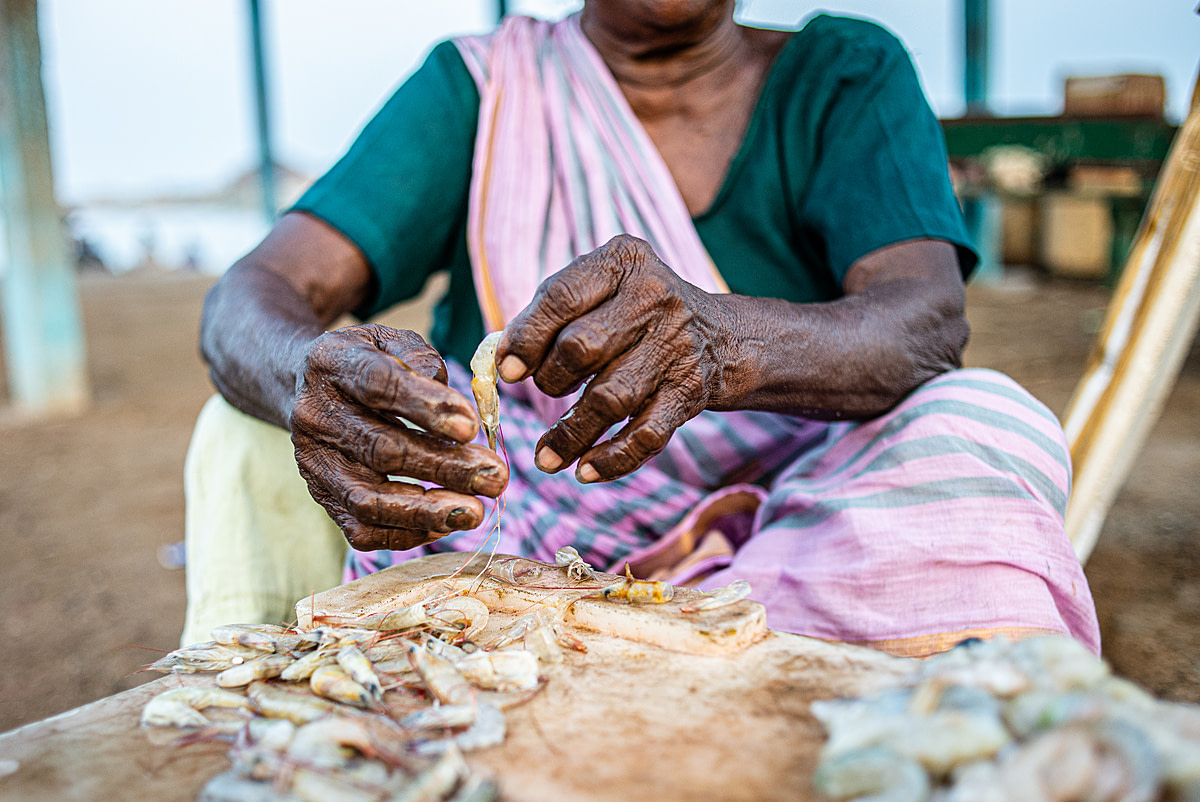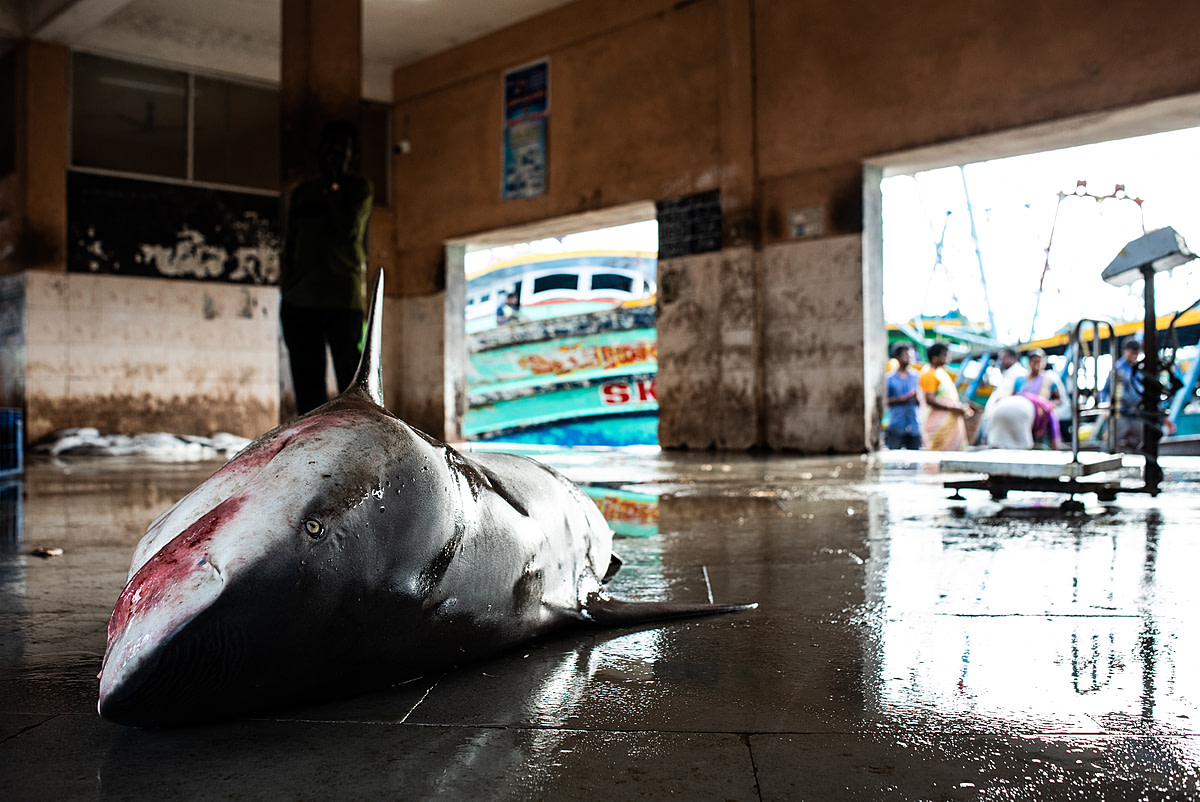[Content warning: Contains confronting images and/or video footage]
We sat down with S. Chakrabarti to find out more about her extensive experience documenting animal stories through the mediums of photo and film, including her recent work with We Animals documenting India’s shrimp industry from source to sale.
Written by We Animals.
All images by S. Chakrabarti.
Animals and nature definitely came to me first. Growing up, I was fortunate enough that my father’s job postings in his government work were in places that were rich in natural biodiversity and the beauty of nature was all around us. I would run after fireflies, there were moss covered stone walls along the paths and bright violet and white wildflowers. Counting moths under a naked bulb, or following a grey hornbill around in the backyard garden to try and find its nest – these were part of my childhood. Our summer vacations were family trips (with our dog) to the mountains which Jim Corbett had described so vividly in his books and all these aspects left a strong inclination towards the natural world as I grew up.
I was actually studying zoology in college before I decided to drop out from the course and pursue a different path. My first proper job was with one of India’s leading news channels in 2007. I saved up to buy my first camera and then started visiting the National Parks to photograph wildlife. Because of my travels, I got a chance to see the on ground reality first hand. My interest towards conservation and indigenous communities started with all those experiences. But given today’s situation, there is an urgent need to highlight the ignored, misunderstood, misrepresented and lesser known species and habitats and to focus on the interconnected and intertwined nature of the relationship between humans and the environment. One cannot be isolated from the other. Whether it’s the food we consume or the roads we build, everything is having an impact not only on the environment, but also on our health and the future of the human race and the planet as a whole. So for the past few years, my personal endeavour has been to tell these stories whether as a photographer or a filmmaker.
S. Chakrabarti / We Animals
If I am going for a purely natural history and wildlife based assignment or shoot, then my go-to gear is the Nikon D750 (and/or a Nikon Z6) with the 200-500mm lens and a 35mm lens. For assignments that need more of an on the go or a bit of a guerilla shooting, it’s the D750 with the 35mm lens. I always carry my zoom recorder to get the ambient audio. The kind of work I do, I travel and shoot solo, so the gear is also very specific because travelling to interior locations or spaces where you have to avoid too much attention means I have to be light on my feet.
You recently completed an assignment for We Animals on shrimp fishing and farming in India. Can you tell us a bit about your experience documenting this complex story and your approach to capturing visuals that communicate it so well?
The most striking aspect of this assignment was the realization of the numbers. India is one of the largest fish and meat producing countries, exporting thousands of tonnes every year. While doing the assignment on shrimp fishing and farming, there was a moment in one of the harbours when I realized that I am seeing the visual representation of just a fraction of what is being caught and farmed in India. And this is happening every day, across the vast coastline of the country. That was one overwhelming reality check. And I kept wondering about how many of us even think about the actual numbers. That one piece of fish on your plate is a part of thousands of fish being pulled out from the ocean everyday. So that is something I wanted to communicate through the visuals. Just the sheer numbers.
S. Chakrabarti / We Animals
S. Chakrabarti / We Animals
The other aspect that I was careful about was the connection of the livelihood of so many people linked to this industry. Shrimp farming and fishing is a huge part of the economy, but the fisher who is bringing the shrimp in or the person who is working in the farm or processing unit is still earning a meagre amount and working in very difficult conditions.
S. Chakrabarti / We Animals
It is definitely difficult to work in such spaces which are a physical embodiment of pain, suffering and death. There is blood and bodily fluids and body parts and also the smell that hangs around all over you even after you leave the location. What also is worth noting, is the clinical and mechanical approach that the people who work in such spaces have. I do wonder how their personalities, mental health and also their physical health might get affected because of their working conditions.
S. Chakrabarti / We Animals
But I strongly feel that having the camera in my hand acts like a dam which kind of protects me from feeling any overwhelming emotions while I am on location. At that time, because I have the camera, it becomes about getting the shot. There are always a few moments of taking in everything, but I don’t allow myself to indulge in my personal feelings. All the feeling happens once I am back – its all in hindsight. Also because if I get emotional while shooting, it is going to be difficult to be unbiased. I have the job and the responsibility to document, in the best way that I can, what I am seeing. This is not a space to create a story, the story is in front of you. You just have to be observant and aware to catch those moments within the chaos.
S. Chakrabarti / We Animals
I think even while reporting as a journalist, you can find your visual language. Since my personal drive is to keep on showing the interconnectedness of humans and the natural world, I always try to have some human element in my frames. So even if it is a dead fish, or a cage of live birds being sold in a pet shop, I will try to create a frame where one can see someone’s legs or a reflection of someone passing by a bucket of dead animals, or just a pair of hands. Visually, I also get very intrigued by the contrast in such spaces – the wet and grimy floor, the patches of light, the colours of the clothes – I try and incorporate these elements as well. So I try to include parts of the physical space as much as I can.
S. Chakrabarti / We Animals
The beauty of the natural world is what makes us so interested in documenting it and to experience it. But there is the other side of the coin as well, which needs to be amplified. And it is high time to highlight the destruction and demolition of natural resources. We aren’t living in silos separated from one another. What is produced in a small animal farm in one corner of the world, ends up in a plate in a high end restaurant on the other side of the planet. Produce from monoculture plantations in developing nations are sold in the supermarkets of the developed countries. So we need to start addressing what we are eating, how we are sourcing it, what impact our food choices are having on the planet, especially when the entire planet as a whole is facing climate change. The planet and the natural world will adapt itself to this change, because that’s the inherent intelligence of nature. But we humans as a species might not be able to.
Since the beginning of 2022, I have become heavily invested in documenting and investigating the fishing industry in India. I have visited only a handful of harbours and markets in just two states here. But even then, I have seen endangered marine species being sold for consumption. Because there has been such an increase in a global demand for specific fish meat, there has also been an increase in their fishing. I personally feel there is a huge difference between consuming something for sustenance versus consuming an exotic species just because you want to. And there is definitely a lack of consumer awareness that needs to be addressed. The demand and supply chain has to be modified. Only then things might start to change for the better. So this is something I am now focusing on.
Get in touch with S. Chakrabarti and follow her work:
Did you know? Our stock platform offers 30,000+ photos and video clips of animal issues around the globe. Non-commercial (free) and commercial licensing available.


